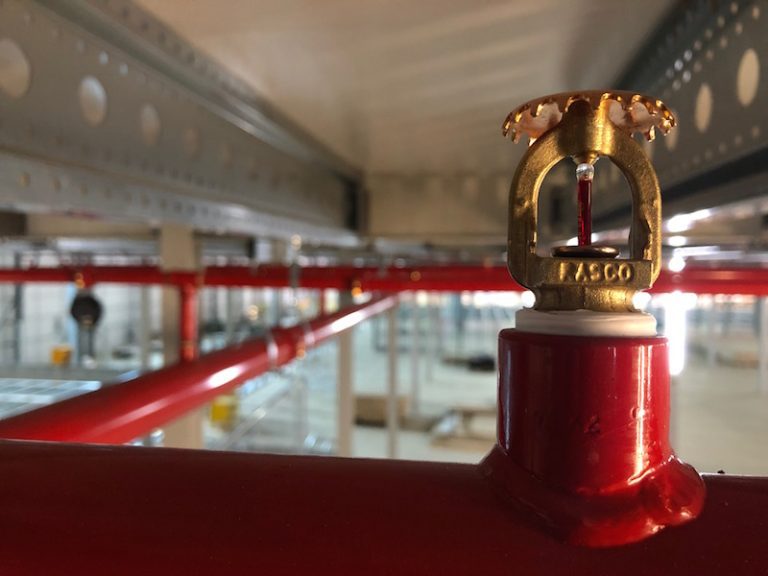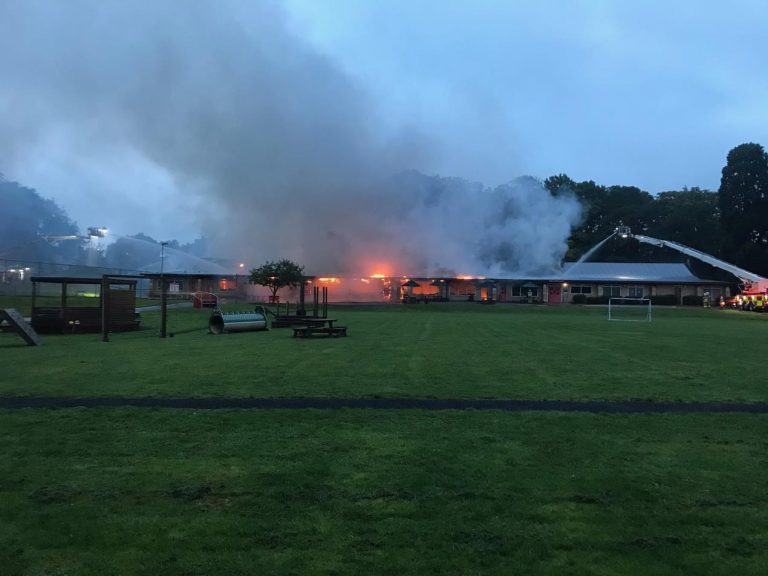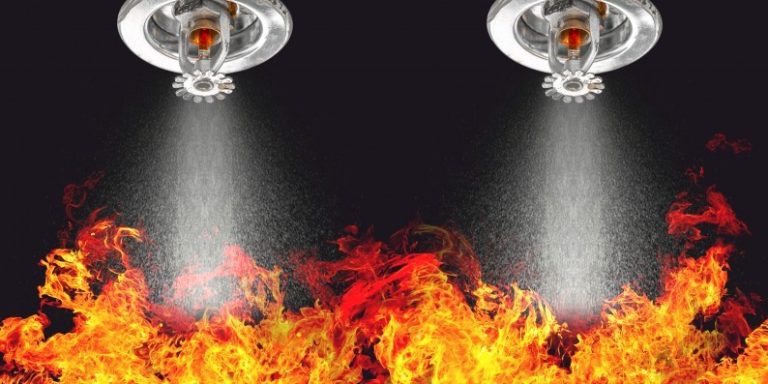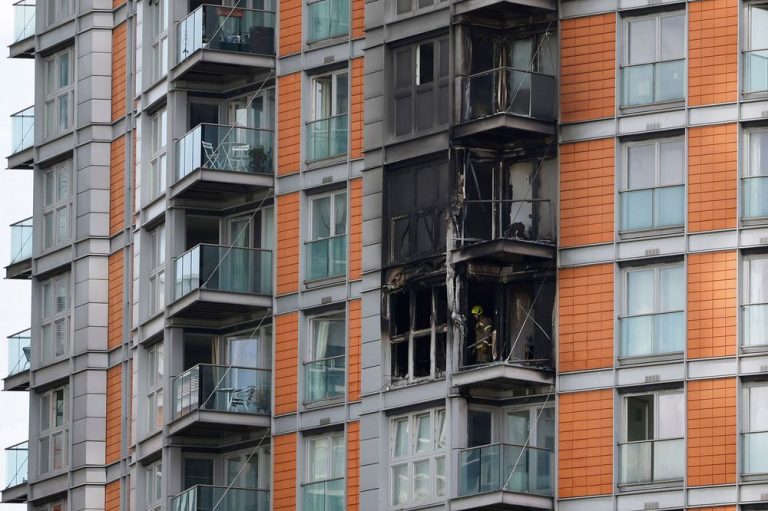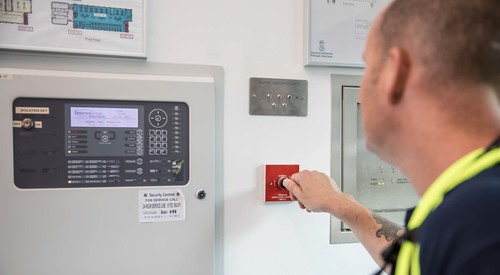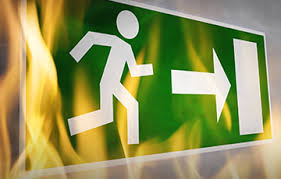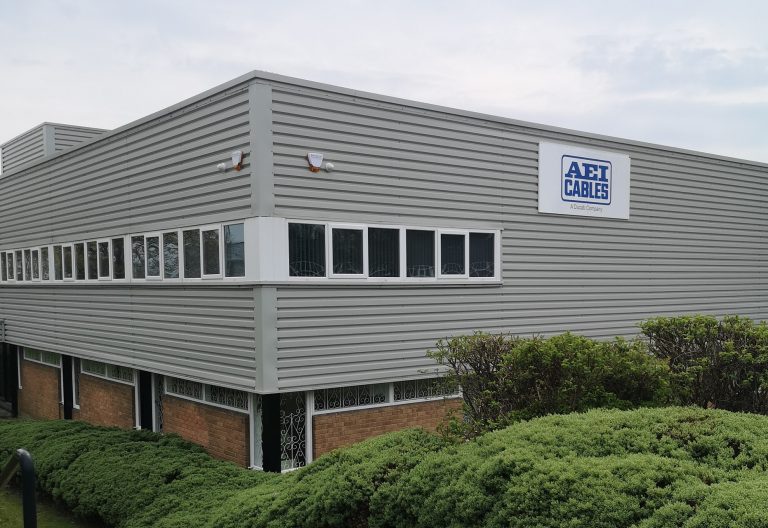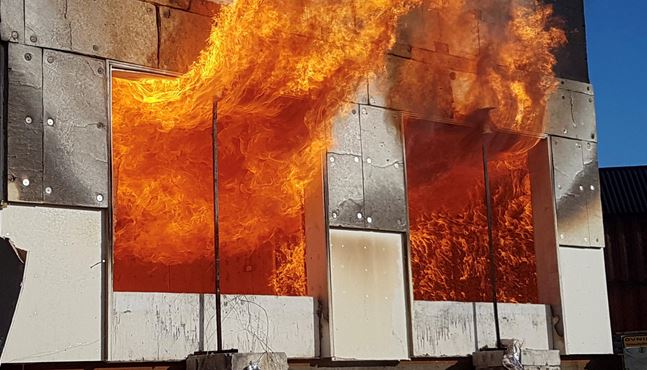In the event of fire in large, crowded shopping centres, the safety and well-being of anyone inside relies on emergency systems operating for long enough for people to escape. Limbecker Platz, one of the largest shopping centres in Germany, chose Spelsberg’s WKE enclosures to provide adequate fire safety protection to vital circuitry that can save lives in the event of fire. While fire prevention plans have greatly contributed to minimise the likelihood of a fire happening in public buildings such as airports, hospitals and shops, the risk cannot be completely eliminated. The percentage of fires in the UK’s shopping centres accounts for 1.7% of the country’s retail fires, which are estimated to be 10.5% of all large loss fires in the UK, according to the Fire Protection Association and the RISCAuthority Large Loss Fire database. The data provided also indicates that the likelihood of fires in malls is equally distributed throughout the day, i.e. the event has the same probability of occurring during a shopping centre’s opening or closing times. Therefore, fire safety is essential and should be supported at all times. In particular, the electrical equipment that supports emergency systems must be adequately protected in the event of fire. In fact, in the event of a fire, electrical systems such as lighting, ventilation, smoke extraction and suppression are vital for saving lives. These systems must be protected from the force of the fire and remain operational long enough for thousands of people to be safely evacuated and for firefighters to extinguish the fire. A shopping centre that has been successful in implementing state-of-the-art fire safety equipment is Limbecker Platz. Built in 2008 and located in Essen, Germany, the mall contains more than 140 retail shops and 25 restaurants across its 70,000 m2 of floor area. With a daily foot traffic of over 50,000 people, the mall requires the highest standards of management to ensure that risks, including fires, are anticipated and covered. Alexandra Wagner, Center Manager at Limbecker Platz explained: “We feel responsible for the safety of our visitors and tenants, and we aim to be well-prepared in case of a real emergency.” Enclosures for optimal electrical functional integrity In order to ensure that electrical installations for emergency systems function safely during a fire, mall managers have to choose between two standard methods of providing fire protection to electrical circuits. The first one consists in encasing the conduits in concrete, mostly within walls; while the second option involves cabling and enclosures that can withstand fire for a prolonged amount of time. The first method presents some limitations. First, it is necessary to design the encasement before the building is erected, therefore any modernisation, inspection or maintenance would require the demolition of the original concrete encasement. Second, while the concrete encasement protects against flame passage, there is no standard identifying how long different concretes may protect an electrical circuit from failure. Finally, this design does not allow for access or visual inspection of conduits and cables should a problem present itself in day-to-day operation. Despite the high quality of fire protection afforded by this option, in many cases the expense and impracticalities make concrete encasement an unviable option. Having reviewed their options, the mall managers at Limbecker Platz chose to follow the second option of specifying fire resistant cabling and enclosures. Solutions that adhere to stringent fire safety regulations are key The next challenge for Limbecker Platz’s managers consisted in finding suitable equipment that would comply with the German standard DIN 4102-12 “Fire behaviour of building materials and elements – Fire resistance of electric cable systems required to maintain circuit integrity – Requirements and testing”. This regulation is considered one of the strictest in Europe and requires all the components of an entire cable system to withstand temperatures of up to 1,000°C and remain operational for at least 30, 60 or 90 minutes. The minimum duration for functional integrity of electrical systems is expressed as an ‘E’ followed by the number of minutes of functional integrity. For example, E60 indicates that the enclosure can resist fire for a minimum of 60 minutes. The intrinsic fire resistance of the electrical components allows the people inside to leave the building and rescue forces to operate. More precisely, the E30 protection is necessary to support safe evacuation and rescue operations. Accordingly, fire alarms, acoustic alerts and other systems used to issue instructions, as well as emergency lighting systems, lifts with fire control and fire extraction systems must remain operational. The E90 is necessary to help during fire-fighting operations. Therefore, the following equipment should remain operational for a minimum of 90 minutes: systems that provide fire suppressing water supplies, fire brigade elevators, as well as mechanical smoke extraction, smoke protection pressure and heat venting systems. In addition to DIN 4102-12, the installations must adhere to the European EN 60670 standard “Boxes and enclosures for electrical accessories for household and similar fixed electrical installations. General requirements”, which provides a number of environmental requirements. For example, the electrical enclosure should feature protection against moisture, dust, corrosion and mechanical stress. Ingress protection classification, in turn, is regulated by the DIN EN 60529 (VDE 0470). In order to address the relevant regulations, the electrical installers for the Limbecker Platz mall project chose to rely on one of the world’s leading manufacturers of electrical equipment enclosures and distribution boards: Spelsberg. Chris Lloyd, Managing Director at Spelsberg, commented: “We are committed to deliver high-quality fire protection enclosures that support businesses like Limbecker Platz and align with their fire protection policies. The safety measures within the mall are advanced, and we are happy to play a part in protecting its visitors and personnel with our quality solutions.” With a long tradition of technical innovation and quality products, Spelsberg manufactures its WKE fire protection enclosures in accordance with DIN 4102-12, i.e. guarantees electrical functional integrity for 30, 60 up to 90 minutes in the event of a fire. Also, Spelsberg’s solutions are certified according to EN 60670 and EN 60529, thus
